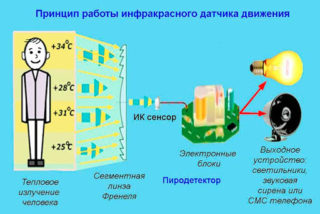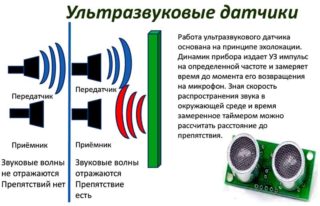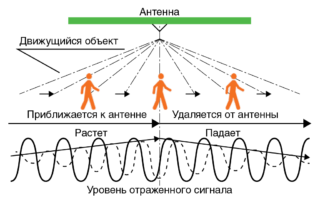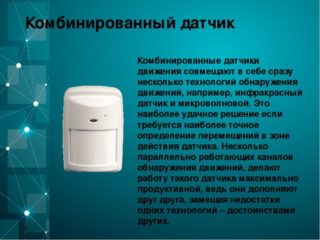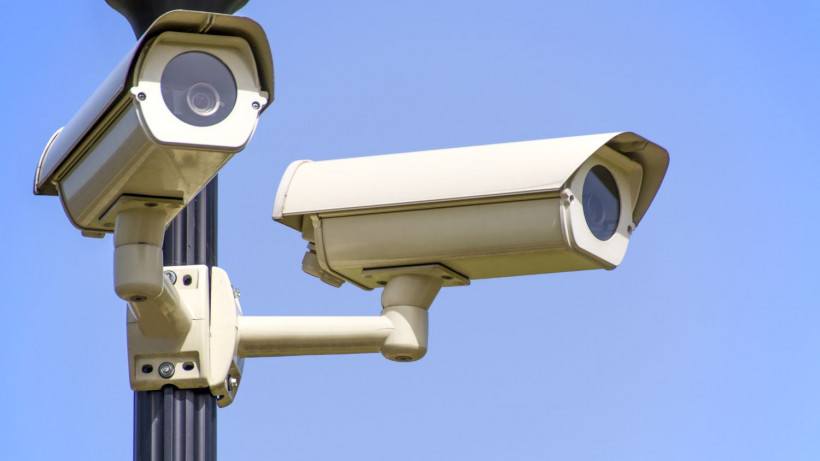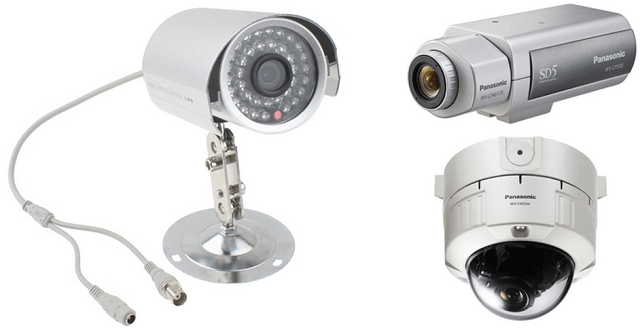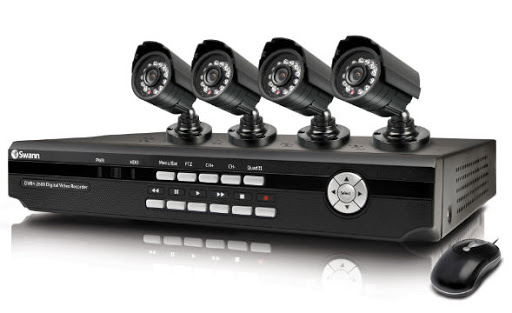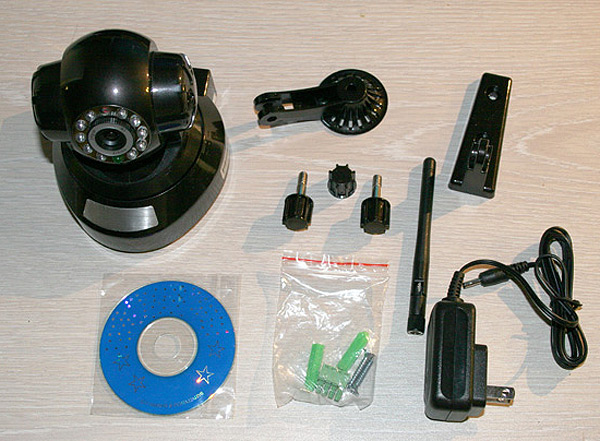Motion detectors react to changes in the flow of infrared rays, triggered by the movement or presence of people. IR rays are focused using a lens, hit the photocell, and it changes the operating parameters. A luminaire with a motion sensor is installed to turn on the electric lighting at the beginning of vigorous activity in the field of view.
- The principle of operation of a luminaire with a motion sensor
- Classification of luminaires with DD
- Infrared
- Ultrasonic
- Microwave
- Combined
- Varieties by type of installation
- Wall mounted
- Ceiling
- Varieties by type of food
- Wired
- Wireless
- Rules for choosing a luminaire with a motion sensor
- Installation and connection
- Advantages and disadvantages of luminaires with a motion sensor
The principle of operation of a luminaire with a motion sensor
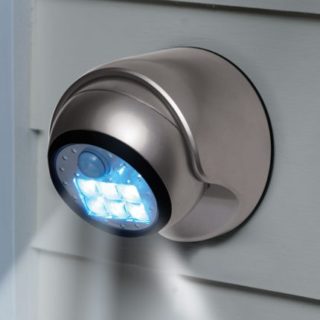
The sensor element captures the movement of the object in the reachable area to control the light. The lamp itself does not react to a change of circumstances, but turns on or stops working after receiving a command from the sensor. The detector relay is preset with a function that is activated when there is a lot of activity in the coverage area.
Not only is the turn-on signal sent, but also the command to change the power. This is how a dimmer lamp works. The light intensity is regulated by a sensor depending on the time of day. A delay in the start time of the light supply is set, which saves energy.
Lamps with a sensor are used in the entrances of houses, living quarters, offices, apartments. Street lights are installed at checkpoints of enterprises, warehouses, and are installed in low-aisle lanes.
Classification of luminaires with DD
Sensitive devices can only register movement or work with other parameters. There are light sensors that turn on light bulbs at dusk, this type is used if constant visibility is needed. The dual-sensor design gives a signal to the lamp if movement of the object is noticeable and there is not sufficient distinguishability.
The sensor can be positioned in two positions:
- built-in device is part of the structure;
- the remote meter is connected to the light bulb using a cable.
The sensing sensor is either ultrasonic based on microwaves or infrared. There are signal converters that are triggered when the degree of noise increases, for example, opening a door, stomping, and other sounds.
Infrared
Sensitive photocells for receiving infrared rays are located inside the meter. In front of each element there is a Fresnel lens for combining and focusing incoming streams. The sensing space is divided between the lenses.
The readings of sensitive photosensors become different when dynamics appears in the field of view of one element, the device records the presence in the coverage area. In practice, the sensor contains cells made of lenses, where there are several dozen elements to increase the efficiency of observation.
Ultrasonic
The analyzer studies noise waves that are beyond human perception. The built-in pulsator emits streams of sound vibrations, after which the sensor is readjusted to receive and waits for the waves to return. The reflected infrasound is analyzed for command selection.
Waves return unchanged if there is no movement in sight. Acoustic currents change readings if there is presence or dynamics (Doppler effect). The detector waits for the change in characteristics to reach the preset sensitivity limit, and gives a signal to turn on the lighting.
Ultrasound is generated by a ceramic or quartz piezoelectric emitter. Sometimes a membrane is placed, which, when vibrated, emits ultrasound from the action of an electrostatic field.
Microwave
Tomographic meters work like ultrasonic models, but study reflected radio waves. The emitter inside generates high frequency electromagnetic fluxes, which are reflected from stationary objects in the field of view.
Radio waves penetrate non-metallic materials such as stone and wood, so they control the area behind obstacles. Compact devices serve territories independent from each other. Microwave devices are sensitive and react to the slightest signs of movement outside the window, wall.
The effectiveness of work does not depend on the weather, the temperature of the surrounding space. Radio wave devices are expensive, so they are installed in large commercial areas.
Combined
If dynamics detectors are used in conjunction with signaling systems, for example, a control panel, interaction combinations are adjusted during installation. Collaboration takes place through the controller, which is integrated with the equipment.
The combined LED light with motion sensor turns on the illumination of the scene and performs the following actions:
- signals an alarm;
- makes mailing of messages;
- changes the functionality of climatic devices.
An innovative combination of actions in one device leads to a decrease in the number of false alarms. The command is given as a result of the synchronous actuation of two sensitive elements. Microwave and infrared meters are more often combined, as well as glass break and motion sensors.
Varieties by type of installation
Lamps with a detector are portable and stationary, the separation arises from the type of energy source. In the first, self-contained accumulators or batteries are used, and the second type is connected to the mains.
Stationary models are wall-mounted, ceiling-mounted, placed outdoors and indoors to perform the following functions:
- recognition of unplanned penetration;
- automation of the lighting process;
- automatic climate control.
The lamp works in the background standby mode if the light level is more than 10 lux. A decrease in the degree of illumination to a level of 5 - 10 lux makes the sensor react and a command is given to turn on the backlight. The repeated transition to standby mode occurs if there are no dynamics or sound vibrations for 2 minutes (or another specified interval).
Wall mounted
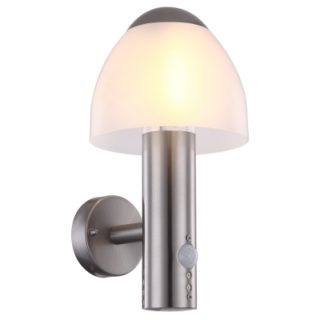
Such light sources are used in small rooms if the ceilings are low and there is no way to hang the chandelier. Wall lamps blend in with the interior and reveal movement in the coverage area. The effectiveness of the work depends on the correct choice of location.
It is better to place a wall lamp with a motion detector in the corner to increase the field of view. If placed on the plane of a wall, two or more tracking devices will be required in order not to overlook areas of the entire space of the room. Most often, the sensors are located opposite the entrance and a large window.
Light sources on the street are placed so that they illuminate and control paths, gates, gates. Better to put them under a canopy or purchase devices in a protective case.
Ceiling
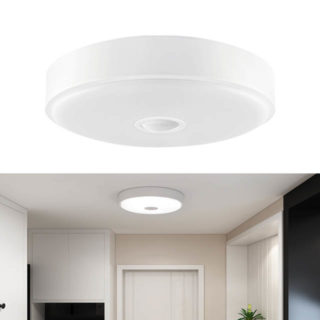
Ceiling lights have a large viewing area, so they detect dynamic changes throughout the room.They are placed in private yards, industrial workshops, warehouses. Manufacturers offer antique or classic, modern style appliances.
Ceiling-type street lamps are placed under awnings, overlappings of recreation areas. At night, the devices are triggered after the appearance of a person in the field of view. Sometimes such places are illuminated constantly, and detectors are used to turn on the light when the natural intensity decreases. The lamps turn on in the evening and independently stop lighting in the morning after sunrise.
Ceiling models serve as alarms, motion detection devices, or to illuminate a space at set hours.
Varieties by type of food
Lighting and signaling equipment is being modernized. Lamps with motion detection are included in complex installations, tracking and response systems. Complex circuits require an uninterrupted supply of electrical current.
Light sources are:
- wired;
- wireless;
- combined.
Controlling fluorescent balance and luminous flux intensity requires a branched cable system, which is not always economically viable. There is an analogue of data transmission in the form of a digital protocol using the DSI interface. Luminaires with response to dynamics are controlled by an analog or digital system, while the second type works according to a simplified version.
Wired
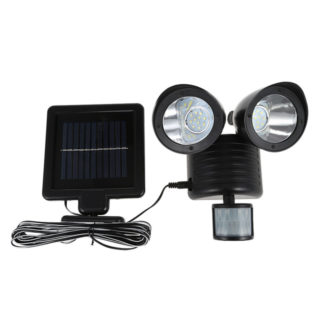
Such models are plugged into an outlet or connected to the electrical network in the building. The devices operate from 220/380 V / 50 Hz. The schematic solution and the design of the connection affect the efficiency and safety of operation. Reliability requirements are prescribed in the intersectoral standards POT RM 016.2001 and RD 153.34.0. 03.150 - 2000.
The electrical safety class of the luminaire depends on the insulation strength at the input-output or housing-input. The choice of the power supply is influenced by the characteristics of the permissible leakage currents. Wired versions of lamps work reliably, since they do not depend on the battery charge. Back-up generators of electricity are used to prevent the sensors from stopping due to a power outage in the mains.
Wireless
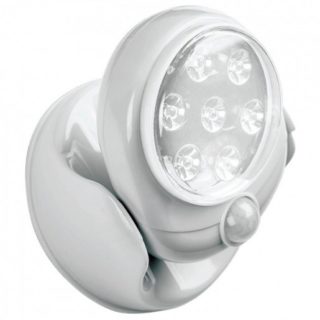
The devices are powered by solar panels, removable batteries. These lamps are equipped with an infrared detection sensor. Stand-alone devices require regular battery changes or the purchase of a solar energy storage device to keep the supply of electricity constant.
Luminaires must have the required protection class of the body shell from moisture and wind, icing, dust. For example, the level of protection of lamps with a motion sensor for the street, bathroom, kitchen must be at least 54 IP. The first number indicates protection against mechanical damage, and the second indicates the class of protection against moisture.
Wireless types are used indoors, in adjoining areas, where the power line is not stretched.
Rules for choosing a luminaire with a motion sensor
Modern night vision devices with the function of turning on the light are divided by power, angle of coverage, sensitivity and the possibility of choosing the delay time before turning on. The light intensity is set on the device box or control point. The viewing angle is set using hinge elements. The parameters are in the instructions for use.
In the latest models of ceiling luminaires, there is no adjustment for the angle of coverage, because they control the space 360 °. The sensitivity can be adjusted from maximum to minimum, as a result of which the sensor reacts only to people and does not turn on the light when animals and birds move. The turn-on delay period is most often set for 5 - 600 seconds.
Installation and connection
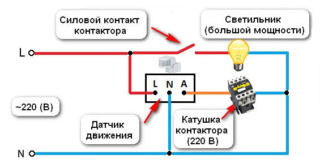
Luminaires with DD are mounted according to the scheme suggested by the manufacturer. The design features a lamp and an LED element, which can be remote or built-in.The first option assumes that the sensor is placed on the ceiling or opposite the entrance, and the light source is located in a convenient place for the best illumination of the room.
In a direct connection, the lamp is connected to the sensor and turns on automatically. In this system, the indicator can burn out during power surges in the network. Simultaneously with the sensor element, an ordinary rocker switch is installed to prevent such situations. The circuit is called a bypass circuit and connects the terminals of the luminaire with the mains and breaker contacts.
Advantages and disadvantages of luminaires with a motion sensor
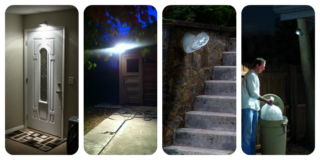
Motion-sensing lamps save electricity because they are included only at certain times. As a result, the life of the light bulb in the device is extended due to the rational mode. Choosing wireless devices saves money that could have been spent on purchasing and installing a cable.
Advantages of motion detection lamps:
- the possibility of completing with LED bulbs, which will save up to 70 - 80% of electricity;
- ease of management, configuration and operation;
- increasing the level of security in a private courtyard or at a farm facility.
Detector lamps are usually warranted for 3 to 5 years, with an estimated payback period of 5 years.

